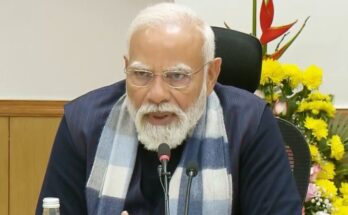Rachita Swain
Here lies One Whose Name was writ in Water– the epitaph of John Keats’, coined by himself— signifies his near obsession with death, and which laments a capricious Fate that denies man of immortality. Surely, everyone, on the brighter side, rejoices in his life-affirming conception of beauty in all things. What is more spectacular is that it comes from a man who died of a prolonged illness. Back then, euthanasia was not legal so he could only contemplate on death. While, on the other hand, there is Kafka who resorted to suicide on account of the same illness and, possibly the stringent laws denying the right to end one’s life. Over a period of time, similar accounts of the premature loss of literary giants are many.
The news flash a plethora of people, including poor farmers, rape victims and even students committing suicide. Mostly, we do not pay a lot of attention other than pouring out a few minutes of pity for them, their cause. At other times, we are angered by the underlying cause. Recently, there has been a surge in suicide cases. Actually, the cases involving television actors and eminent people, who have entertained us for quite a long time— probably, this is what makes them so starkly visible. To name a few TV veterans, we have been pretty shocked by the untimely deaths of Sushant Singh Rajput and Sameer Sharma. Both were found hanging in their apartments, in succession, within a matter of hardly two months. The cause remains obscure because they were affluent personages and we are so attuned to suicides resulting from poverty and indignity that we cannot imagine the voluntary end of an elite person. Whether it be financial crisis or emotional instability, we have an inclination to blame Fate— in spite of the best efforts made, things slip out of our hands. This precisely, is an easy route to escape, without touching upon the mitigation of blaming someone or rather the situations that arise due to willful actions or perhaps, expedited by some kind of supernatural force— a technique that Madame Bovary’s husband uses to get away with his ineffectiveness to love enough.
All of it boils down to the question of, not “what” happened but “why” did that happen. While “depression” seems to be a broader term covering such cases, climbing down a few steps, it is not an easy subject to grapple with. An oft-quoted Indian axiom: “men don’t cry” has made images rigid and things more difficult for men. In the presence of a still prevalent gender biased society, it is assumed that women can wail copiously on being hurt but the pressure of a “masculine” image among males makes it difficult for them to cope up with failure, taking into account the status they’ve occupied and this in turn, quite unfortunately, prevents their chances of reaching out for help.
As an exceptional case, Sushant’s depression and abetment to suicide reveal the underlying cause of his death—the ugly face of nepotism in the film industry. But what about the people whose deaths have been one of wilful desire? If bisexual men are committing suicide due to “rejection” then what about the people who’ve gained immense popularity and “acceptance” in the society! In a way, depression resulting in suicide was criminalized by the Section 309 of the Indian Penal Code by meting out punishment, to those who attempt suicide, with a term of one year with fine or both. However, questions were raised as to how can punishing an already emotionally turbulent soul help, rather it would stigmatize the suicide survivor.
Again, that is backed by religion: only god has the right to grant and end lives. But, once a person is on the brink of wilful death, it is a Herculean task to convince them to withdraw from doing so. Suicides, more likely, dramatize the chaos that they were so enmeshed in, unseen. Venting their fury and addressing depression which is such a raging debate holds water only for a person who is willing to communicate. As did Michelle Obama: she confessed she is suffering from a low-grade depression. But to compel communication as a solution to a tormented soul would mean making the person take a headlong plunge towards lifelong madness. In the process of curing his mental health, Ernest Hemingway despaired that the electric shock treatment inhibited his creativity. For the audience of movies like Chhichore and Dil Bechara, Sushant is full of positivity, whose reel life did not have parallels with his real life. Can we not also relate to Hemingway’s unlikely suicide whose character, Santiago, a luckless-has-been, of The Old Man and the Sea, retains his optimism: “A man can be destroyed but not defeated”!
Real suffering is not known.
Suicide was decriminalized as per Section 115 of Mental Health Care 2017. Has the number of deaths by suicide waned since then? Doesn’t seem like it. A person who attempts suicide is taken as a coward. Why not conjecture that this is the repercussion of a satisfaction with worldly desires that called for a need to embrace deep rest, in the absence of suicide notes or prior depression. We are inclined to guess those who committed suicide were unhappy. “Happiness” is a relative term. It either satisfies or betrays the very preference of existence to extinction. Instead of an endorsement of suicide, if any kind of pain curbs a person’s continuity of ease, assisted suicide is permissible, though by medics only. However, when art ceases to offer shelter, what is the point of living for an artist who has lost the motivation and eventually the ability to create? The right to death as is to live, therefore, stems from a sort of an unexplicated agony that they go through when the art also dies. We’re to cling on to the positivty emanating from the creation of such towering personalities— whose literal obliteration has and will, never affect the heroic struggle, frequented by continual optimism.




